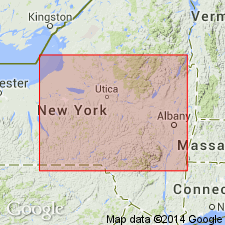
- Usage in publication:
-
- Chautauquan period
- Chautauquan group
- Modifications:
-
- Original reference
- AAPG geologic province:
-
- Appalachian basin
Summary:
Chautauquan period or group. Includes Chemung beds and Catskill sandstone, local facies. Age is Late Devonian.
Named from exposures in Chautauqua Co., NY.
Source: US geologic names lexicon (USGS Bull. 896, p. 407).
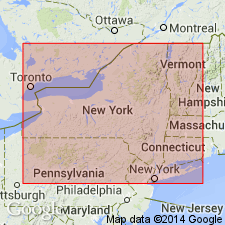
- Usage in publication:
-
- Chautauquan
- Modifications:
-
- Overview
- AAPG geologic province:
-
- Appalachian basin
Summary:
Follows definition of Clarke and Schuchert (1899).
Source: US geologic names lexicon (USGS Bull. 896, p. 407).
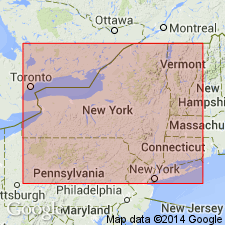
- Usage in publication:
-
- Chautauquan
- Modifications:
-
- Revised
- AAPG geologic province:
-
- Appalachian basin
Summary:
Pg. 69. Included in Chautauquan at top the lower part only of the Catskill, and at base certain beds (Dunkirk shale, Gowanda shale, Laona sandstone, etc.) that had previously been included in the Senecan and in Portage group of western New York. In 1924 (New York State Mus. Bull., no. 251, p. 149-157) Chadwick again employed his modified definitions of Senecan and of Portage group. His charts show that the beds he transferred to Chautauquan (and to Chemung) he correlates with Cayuta shale and Wellsburg sandstone members of Chemung of central New York. Age is Late Devonian.
Source: US geologic names lexicon (USGS Bull. 896, p. 407).
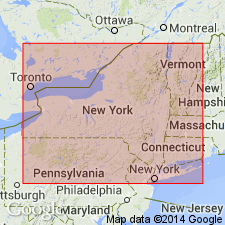
- Usage in publication:
-
- Chautauquan
- Modifications:
-
- Revised
- AAPG geologic province:
-
- Appalachian basin
Summary:
Chautauquan of western New York includes Chadakoin beds at top and Dunkirk shale at base. Age is Late Devonian.
Source: US geologic names lexicon (USGS Bull. 896, p. 407).
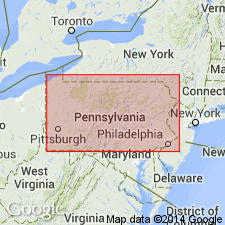
- Usage in publication:
-
- Chautauquan series
- Modifications:
-
- Revised
- AAPG geologic province:
-
- Appalachian basin
Summary:
Pg. 54, 60-61, table (facing p. 62). Chautauquan series. Embraces strata from base of Chemung to base of Bradfordian series of former classifications. Chautauquan was "viewed by New York State geologists as marking close of Devonian and overlying Bradfordian was considered of Mississippian age. Name Bradfordian series is here abandoned, and term Conewango series is applied to Devonian part of the Bradfordian "series." Conewango series is a closing phase of Upper Devonian sedimentation in New York and Pennsylvania. Chautauquan series comprises Girard stage below and Chadakoin stage above.
Source: US geologic names lexicon (USGS Bull. 1200, p. 733-734).

- Usage in publication:
-
- Chautauquan group
- Modifications:
-
- Overview
- AAPG geologic province:
-
- Appalachian basin
Summary:
Chautauquan group. Recognized in New York. Age is Late Devonian. [Not adopted by the USGS for use in its publications.]
Source: US geologic names lexicon (USGS Bull. 896, p. 407).
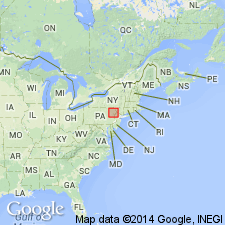
- Usage in publication:
-
- Chautauquan stage
- Chautauquan division
- Modifications:
-
- Areal extent
- AAPG geologic province:
-
- Appalachian basin
Summary:
Pg. 240-253 (Section on Middle and Upper Devonian by Bradford Willard). Major units of Chautauquan stage (division) of marine Upper Devonian in northwestern, north-central, and central Pennsylvania are (ascending) Chemung, Canadaway, Conneaut, and Conewango groups.
Source: US geologic names lexicon (USGS Bull. 1200, p. 733-734).
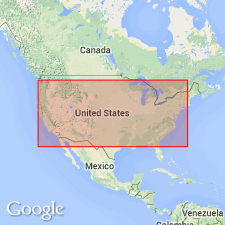
- Usage in publication:
-
- Chautauquan series
- Modifications:
-
- Revised
- AAPG geologic province:
-
- Appalachian basin
Summary:
Chautauquan series. As shown on correlation chart, Devonian comprises (ascending) Ulsterian, Erian, Senecan, Chautauquan, and Bradfordian (in part) series. Chautauquan comprises Cassadaga (new) and Conewango stages. Age is Late Devonian.
Source: US geologic names lexicon (USGS Bull. 1200, p. 733-734).
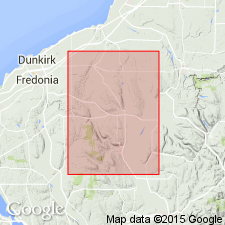
- Usage in publication:
-
- Chautauquan group
- Modifications:
-
- Revised
- AAPG geologic province:
-
- Appalachian basin
Summary:
Chautauquan series reduced to Chautauquan group and incorporated in upper part of Senecan series. Age is Late Devonian.
Source: US geologic names lexicon (USGS Bull. 1200, p. 733-734).
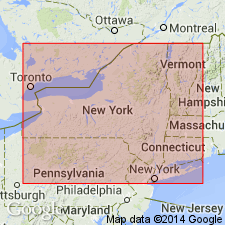
- Usage in publication:
-
- Chautauquan series
- Modifications:
-
- Revised
- AAPG geologic province:
-
- Appalachian basin
Summary:
Pg. 8, 9. Chautauquan series redefined to include all Upper Devonian rocks. As redefined, includes in western New York (ascending) Seneca, Arkwright, and Conewango groups. Occurs above Middle Devonian Erian series.
Source: US geologic names lexicon (USGS Bull. 1200, p. 733-734).
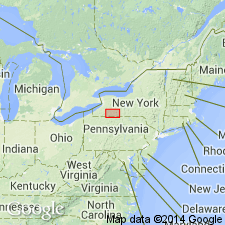
- Usage in publication:
-
- Chautauquan series
- Modifications:
-
- Revised
- AAPG geologic province:
-
- Appalachian basin
Summary:
Pg. 17. Chautauquan series. General stratigraphic column of Wellsville area shows Chautauquan series comprises (ascending) Canadaway, Chadakoin, and Conewango groups. Above Senecan series; below Knapp "formation," Kinderhookian series. Age is Late Devonian.
Source: US geologic names lexicon (USGS Bull. 1200, p. 733-734).
For more information, please contact Nancy Stamm, Geologic Names Committee Secretary.
Asterisk (*) indicates published by U.S. Geological Survey authors.
"No current usage" (†) implies that a name has been abandoned or has fallen into disuse. Former usage and, if known, replacement name given in parentheses ( ).
Slash (/) indicates name conflicts with nomenclatural guidelines (CSN, 1933; ACSN, 1961, 1970; NACSN, 1983, 2005, 2021). May be explained within brackets ([ ]).

